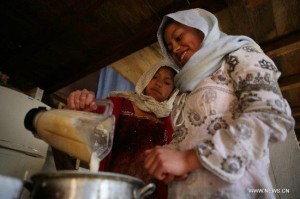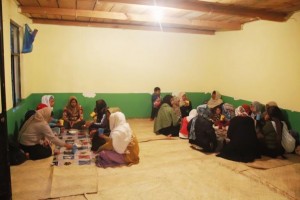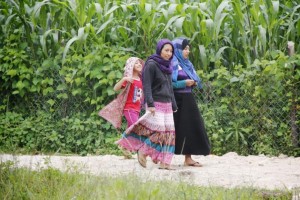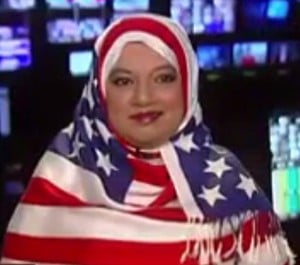There is a lot of talk recently about “Latin” and Spanish-speaking converts to Islam, particularly women, which I have discussed in previous posts (here and here). Female converts to Islam, in general, give us a lot to talk about; thus, my question in a previous post on “Are converts news?” Some converts are treated as “cool” and progressive members willing to speak to the media. Others are used to represent media obsessions with wild-girls-gone-Muslim stories, which many Muslims and non-Muslims love. Some others are depicted as desperate wives-to-be who are under the spell of patriarchal Muslim men. Readers of Muslimah Media Watch know that we have seen it all in terms of how converts are discussed.
Nonetheless, there are some conversion stories that are not frequently discussed, those of racial minorities in precarious conditions. In my personal experience, white converts tend to experience different challenges, but are rarely discriminated against racially (within or outside Muslim communities). Racial complexities are not solely related to one’s skin colour, but rather to an overall look and sense of identity. As a convert I have been attributed numerous “colour-schemes” as if my community had to make sense of my looks. I have been told I “could be” Chinese, Indonesian, Korean, Afghani, Malaysian, or even a “darker white person.” And when I happen to mention I was born in Mexico, people (not only Muslims) tell me that I do not look like Mexican. My immediate question is, how are Mexicans supposed to look like?
The racial issue became more evident to me last year when I visited Mexico. I had heard that there were visible signs of Muslim immigration to the country (such as women wearing veils), but they were rare. However, during my last trip I encountered a group of young Indigenous women who were veiled and identified as Muslims. Islam is not new to Mexico, in fact there is an important Lebanese community that is not only Christian but also Muslim. Stories of Indigenous peoples becoming Muslim (or radical Muslims) are starting to flourish, although they by no means receive the same media attention as those of white or privileged converts (here, here and here). However, the encounter of Islam and Indigenous peoples in general has yet to be studied. Indigenous peoples conversion to Islam is a complex issue not only because of societal norms, but also because of the nature of many Indigenous people’s racial, economic and social status in their countries.

One of the most salient Indigenous-Muslim communities in Mexico is located in the southern state of Chiapas. Since the early 2000s Mexican media outlets have reported on the existence of a small Tzotzil-Muslim community in the state. For those not familiar with the history of that part of Mexico, it is a region that has been plagued by conflict and some of the most aggravated human rights abuses in the history of post-colonial Mexico. Chiapas is home to the Zapatista movement rising up against state abuses, whose supporters were victims of the Acteal massacre in 1997.
In the past decades the south of Mexico has experienced an influx of missionaries, particularly Mormon missions. At the same time, Muslim communities have sprung and have attracted the attention of Al-Jazeera, Muslim Village and the International Business Times. Coverage of the conversion stories make me uneasy, as these sources describe the Indigenous experience as that of the “mud-hut mosque” Muslims, who in the middle of conflict, and after several conversions to different branches of Christianity, saw the light through some foreigner who could recite Qur’an.

Although I cannot attribute my discomfort entirely to media coverage, the ascription of conversion to missionary work has always been a challenging concept for me. Whether it is missionary work, spreading the word or performing dawah, I grew up with missionaries (of different religions) providing services conditionally upon conversion or dividing communities by preaching values that clashed with traditions or practices. Whereas some Muslims would cringe at the idea of “non-Orthodox” Islam, in Mexico, and I am sure many other countries, religious syncretism has been the norm. I, personally, see religious syncretism as a way to make the best out of an ugly colonial history. Yet, as a convert of Indigenous background I am completely aware of the complexities of identity and the acceptance of a religious identity (something I recently wrote about). On the one hand, we accept something that is “not ours;” but on the other, it makes sense to us.
So, what is the broader picture of Indigenous converts to Islam? As I mentioned before, there is little information about what the Indigenous-convert experience is like. Nonetheless, before going off to brag about how Islam is attracting new members and deciding to share a million pictures of Indigenous women in hijabs, we need to contextualize conversions. Will the broader Muslim context eventually require them to pick one identity over the other (Muslim vs. Indigenous)? Or would we, as Muslims, learn to make space for other needs? Including those of Indigenous peoples, fighting a non-ending war against colonialism, neoliberalism and the modern expressions of racial oppression.













